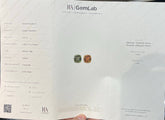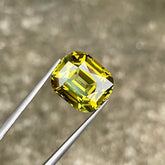Amber Gemstone Value, Price, History & Jewelry
Amber is a gemstone formed by the fossilization of tree resin. Ambers resin is not the same as typical tree sap. It comes specifically from the Pinus succinifera tree. The fossilization of this gem dates back to the Tertiary period, which means that these stones were formed around 50 million years ago. Since this stone is formed from soft, sticky resin, amber often contains animal and vegetable inclusions; mainly mosquitoes and other insect species. The gems that has grown in coal seams are often referred to as resinite, and specimens specifically from New Zealand coal seams are referred to as ambrite Amber is the. The most common varieties of organic gemstones include amber, pearl, coral, and ivory. The word amber is derived from the Middle Persian word Ambar. It was originally used to describe a hardened waxy substance found in the intestines of sperm whales called ambergris. Ambergris is used in the production of perfumes because it has a very attractive aromatic smell. During the 14th century, the use of the term amber changed from referring to ambergris to the gemstone. Amber and ambergris were often confused as both can be found washed up on the shores of beaches. The two are easily distinguished by density. Ambergris has a much lower density and floats in freshwater. Amber gemstones do not float in freshwater but float in saltwater.
Amber Gems Formation
The process of forming amber begins with the transformation of resin into a copal. The transformation is triggered by the high temperatures and the pressure of the overlying resinous sediments. Exposure to heat and pressure repels terpenes, which can cause spoilage and rot. With time and resistance, the resin eventually hardens and fossilizes into amber. Many trees produce resin, but most dont actually produce amber. The resin of the tree must be very strong and resistant to rot. The majority of resin deposits cannot withstand prolonged exposure to the sun, rain, and extreme temperatures. Also, Read - Amblygonite Gemstones Value, Price, & Jewelry.
How to Identify Amber gemstone
Unlike most other colored stones, amber has an amorphous rather than a crystalline structure. Amber has a very low specific gravity, which means it is exceptionally light. The low density of amber allows it to float in saltwater. Amber is difficult to imitate due to its extremely low density. For comparison, the total size of a 5-carat amber gemstone is 2.5 times the size of a 5-carat zircon (one of the densest types of gemstones). Also, Read - February Birthstone: Amethyst | Color, Meaning, and History.
Origin of Amber and sources of gemstones
The main source of amber gems is just west of Kaliningrad, Russia. Amber from this region is found in clay about 30 meters below the surface. The second-largest source of amber is the Baltic region. Baltic amber comes from the seabed and is often found washed up onshore. Baltic amber is known for its beautiful golden colors. The Dominican Republic is known for having rare blue-colored amber. Dominican Republic amber is considerably younger than other varieties of amber. Italy, Romania, China, Japan, Burma (Myanmar), Mexico, Canada, and the United States are also known to have amber deposits.
Buy Amber gemstones & determine Their value
Amber color and tint
Amber comes in a range of different colors, but its mostly yellow, orange, or brown. Golden yellow amber is usually a hard, translucent resin from evergreen pine trees. Amber can also be whitish to pale lemon yellow and brown to almost black. The Dominican Republic is known for producing rare blue amber. There are also rare green and red colored ambers. Red amber is sometimes called cherry amber.
Amber stone Clarity and Luster
Ambers clarity ranges from transparent to opaque and it has a resinous luster. Most amber specimens have pockets of air bubbles and various other inclusions. Pyrite impurities can sometimes give amber a bluish color. Many varieties of amber have a very cloudy clarity caused by many tiny bubbles; these stones are known as bone amber. Amber with clear transparency is more desirable than cloudy specimens. The most valuable amber stones are those that contain insects, plants, or pyrite inclusions. Also, Read - January Birthstone | Garnet Birthstone Meaning, Colour, Ring.
Cut and shape of Amber Stone
Amber is almost always cabochon cut. Amber is very rarely faceted. In the past, amber was most often used for ornamental designs. Amber is very easy to cut because it is so soft. Like most types of gemstones, lapidaries try to preserve as much of the gemstone as possible during cutting, so many amber stones will end up with nodular teardrop shapes. Round and oval amber stones are very popular; other fancy shapes such as stars, hexagons, pentagons, trillions, and heart shapes are also readily available. Check out this: Abalone Pearls; Rare Iridescent Treasures of the Sea.
Amber Gemstone Treatment
Amber is usually untreated, but some amber stones have been put together from two or smaller stones. Smaller stones are united by coating the surfaces with oil, heat, and pressure. Gemstone suppliers must always disclose this enhancement; this type of stone is sometimes called Ambroid or Pressed Amber. Amber can sometimes be limpidly enhanced by an oil bath. Amber stones can be imitated using other resins such as copal or kauri gum. Baltic amber is sometimes artificially enhanced to create more vibrant colors. Read - List of Gemstones with Names, Pictures, and Colors.
Gemmological properties of Amber Gemstone:
| Chemical formula: | C10H16.0 (approximate) |
| Crystal structure: | Amorphous |
| Color: | yellow, brown, orange, red, and others |
| Hardness: | 2 - 2.5 on the Mohs scale |
| Refractive index : | 1.539 - 1.545 |
| Density: | 1.05 - 1.09 (approximate) |
| Cleavage: | Nothing |
| Transparency: | Clear to Opaque |
| Double refraction / birefringence: | Nothing |
| Chandelier: | softwood |
| Fluorescence: | Bluish white - Yellow-green |
Amber Gemstone varieties or other similar gemstones:
There are many varieties of amber and most are grouped by origin or color. Dominican Republic amber can sometimes come in a rare blue and be fluorescent. This variety is considered the rarest amber and turns blue under natural and ultraviolet light sources. Under long-wave UV lighting, it has a very strong, almost white reflection. About 100 kilograms of blue amber from the Dominican Republic are purchased per year, which makes it extremely valuable. There are a few organic gemstones that are similar in composition, including jet, pearl, coral, and ivory.
Most popular varieties of Amber:
Baltic amber, bone amber, and Dominican amber are the most common varieties of amber.
Lesser-known Amber Gemstone varieties:
Dominican blue amber, resinite, amirite, embroid, and pressed amber are some of the lesser-known varieties of amber.
The mythology of Amber gemstones, metaphysical and healing powers
Amber has been used for many generations as a medicinal gem, from the Middle Ages until the early 20th century. Although it is an amorphous gem, it is still used for its crystal healing abilities. Since the time of Hippocrates in ancient Greece, amber and its resinous extracts have been used to heal and relieve a variety of health conditions. Amber was one of the first stones used in amulets throughout Asia. Amber is said to carry sunny energy, likely due to its natural golden color, and is used to clear negative energy. Sunny dispositions and positive outlooks are enhanced by wearing amber stones. Amber gemstones are known to brighten up those who wear them. It is believed that amber is able to ward off disease from the body and remove negativity from emotional energy. Disclaimer: The metaphysical and alternative healing powers and properties of crystals should not be taken as confirmed advice. If you have any health concerns, please consult a licensed practitioner. This information does not replace the advice of your doctor. GemSelect does not warrant any claims or representations made and cannot be held liable in any way.
Amber Gemstone and Jewelry Design Ideas
Amber has been used in jewelry since prehistoric times. Amber is believed to have been one of the first types of gemstones used in amulet jewelry. Amber ornaments have been found in ancient Mycenaean tombs, as well as other areas where ancient civilizations flourished across Europe. Still to this day, amber is popular and is used for ornamental designs such as glassblowing pieces. Although amber is one of the softest types of gemstones available, it is still frequently worn as jewelry. It is not recommended to be worn in cabochon ring designs, but with care, many people use it for rings. Amber gemstones are best used for earrings, brooches, and pendants, but if properly cared for, amber can be worn in a variety of different jewelry designs. Note: Buy colored gemstones by size, not by carat weight. Colored stones vary in size to weight ratio. Some stones are larger and some smaller than diamonds by weight in comparison.
Care and cleaning of gemstones and Amber jewelry
Amber is a fairly soft type of gemstone, with a hardness rating of only 2 to 2.5 on the Mohs hardness scale. Although it has endured millions of years of intense heat, pressure, and weathering, amber is still very sensitive to acid, gasoline, caustic solutions, alcohol, and perfume. . Amber can easily burn and give off a smoky smell resembling incense. Amber should only be wiped with a soft cloth. Ultrasonic cleaners should never be used to clean amber stones or amber jewelry. It is not recommended to soak amber stones for long periods of time; prolonged exposure to water can ruin the varnish. Amber can be easily scratched by other jewelry, especially pin shanks, facet edges, and jewelry edges. Protect amber stones by wrapping them in a soft cloth and always store amber separately from other gemstones and jewelry.
Amber Gemstone Value, and Price
The two main sources of amber on the market today are the Baltic states and the Dominican Republic. Amber from the former is older, and thus preferred on the market, but that obtained from the latter is more likely to have insect inclusions. Amber prices can range from $20 to $40,000 or more. Fortunately for new amber enthusiasts, amber from the Baltic states is more widely available on the market than it was in previous years thanks to the liberalization of the economies of Eastern Europe and the former Soviet Union
















Leave a comment
Please note, comments need to be approved before they are published.